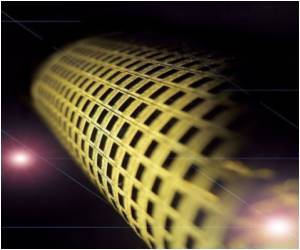
This channel system could be further developed into very sensitive sensing devices.
The ability to detect a chemical at a low concentration and high contamination is especially important for environmental surveillance, homeland security, athlete drug monitoring, toxin/drug screening, and earlier disease diagnosis.
The study was carried out in the laboratory of Peixuan Guo, the William S. Farish Endowed Chair in Nanobiotechnology at the University of Kentucky Markey Cancer Center.
In the case of disease diagnosis, the production of an unusual metabolic product is a feature of disease, but in early stages, the concentration of this product is very low. Single molecule detection will facilitate the early detection of disease such as cancer, so as to facilitate earlier treatment.
"Sensitivity of detection is a major challenge in the diagnosis of many diseases. Our next step is to find one metabolic product of one disease and determine the reality in earlier disease diagnosis," said Guo.
Advertisement
The study was published online for ACS Nano.
Advertisement








